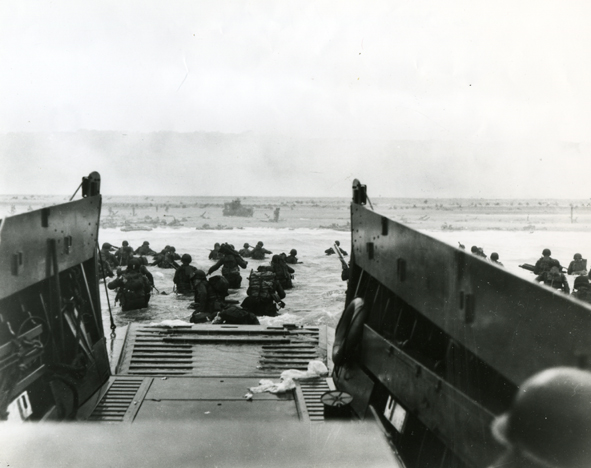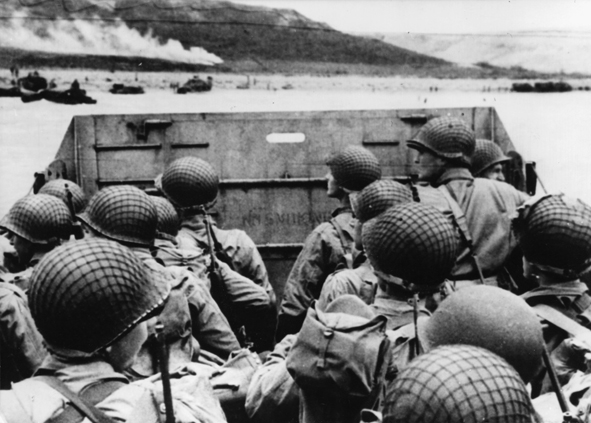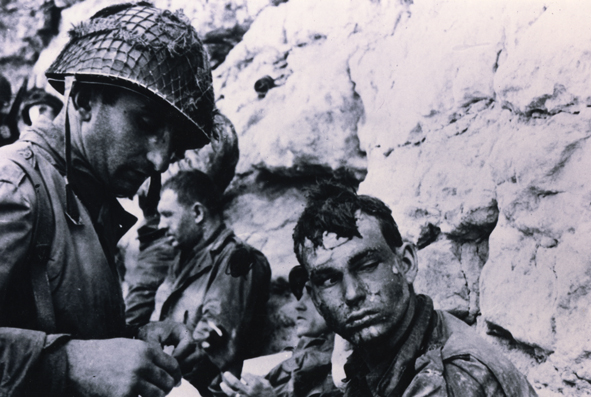- Point of Interest
- 6 Rue Bernard Anquetil, 14710 Saint-Laurent-sur-Mer, France
Omaha is the most renowned of the five landing beaches of D-Day, 6 June 1944. On this 6-km-long beach the U.S. troops had to deal with German defences that were still virtually intact. They suffered heavy losses and came close to disaster.
Omaha is the most famous of the five beaches of 6 June 1944. The U.S. divisions involved lost some 4.700 men, who were either killed, wounded or missing. It was the highest rate of D-Day losses in any of the five landing zones. Soon the beach was dubbed ‘Bloody Omaha’.
The two U.S. infantry divisions which landed from 06:30 onwards (the 1st Division on the eastern half of the beach and the 29th division on the western half) experienced critical moments. The first two assault waves were decimated within a few minutes.
All engineer battalions of the Army and Navy suffered heavy losses: they were responsible for clearing the beaches of the many obstacles that encumbered quick progress; the sappers were exposed to enemy fire without much protection. Amidst the chaos, small groups were still able to infiltrate between the German fortifications and gain a foothold inland. On the evening of D-Day, however, the situation still remained precarious.
Several factors explain the heavy losses. The preparatory bombardments, to start with, had left almost all defences intact. The German troops were more numerous than expected. The amphibious tanks failed badly at the beginning of the assault, some of them sank in the rough sea. After jumping off the landing craft, the attackers had to wade unprotected for several hundred meters through water up to the waist (the flat-bottomed landing craft halted as soon as they hit the rolling beach). Finally, from the 15 German strongpoints called Widerstandsnester, the defenders had a perfect shooting range. Standing on the hillsides today, one understands the advantage enjoyed by the defenders.





